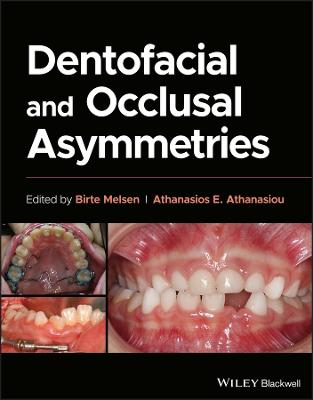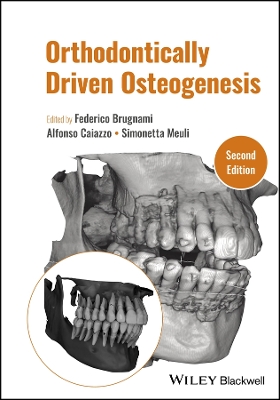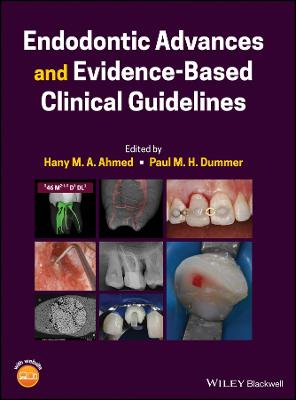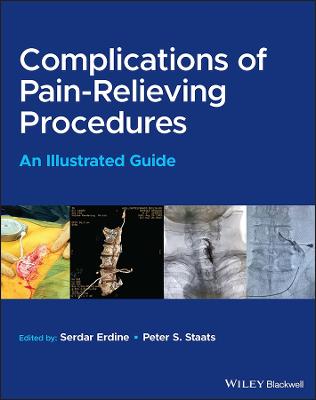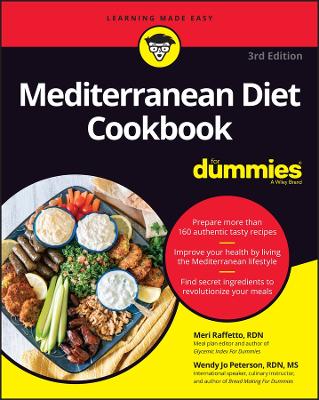Adult Orthodontics
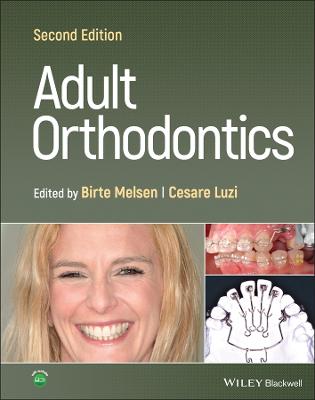 -15%
portes grátis
-15%
portes grátis
Adult Orthodontics
Melsen, Birte; Luzi, Cesare
John Wiley and Sons Ltd
10/2022
480
Dura
Inglês
9781119775775
15 a 20 dias
1558
Descrição não disponível.
List of Contributors xiii
About the Companion Website xv
Introduction xvii
Introduction: More than a Century of Progress in Adult Orthodontic Treatment xix
1 Potential Adult Orthodontic Patients - Who Are They? 1
Birte Melsen
Introduction 1
Who are the patients? 1
How do the patients express their needs? 6
The first visit 7
Communicating with the patient 9
Summary 10
References 10
2 Diagnosis: Chief Complaint and Problem List 12
Birte Melsen, Marco A. Masioli
Introduction 12
Workup of a problem list - the interview and chief complaint 12
General health 15
Clinical examination 16
Extraoral examination 17
Extraoral photographs 19
Function of the masticatory system 22
Intraoral analysis - oral health 23
Evaluation of dental casts - arch form 24
Occlusal analysis 24
Space analysis 26
Cephalometric analysis 26
Final problem list 27
Indication for treatment 28
The presentation of the problem list - the tip of the iceberg 29
Concluding remarks 33
References 33
3 Aetiology 35
Birte Melsen
Introduction 35
Biological background 35
Aetiology of malocclusions in adults 41
Age-related changes in the skeleton 42
Age-related changes in the craniofacial skeleton 46
Age-related changes in the local environment 47
Consequences of deterioration of the dentition 48
Case reports 49
Conclusion 52
References 52
4 Interdisciplinary versus Multidisciplinary Treatments 54
Birte Melsen
Interdisciplinary or multidisciplinary treatments 54
Establishment of an interdisciplinary team 56
Treatment sequence 59
Essential and optional treatment procedures 59
Interaction during treatment 62
Post-orthodontic treatment 62
Patient satisfaction 62
Examples of interdisciplinary cases 63
References 63
5 Treatment Planning: The 3D VTO 65
Birte Melsen, Giorgio Fiorelli
Determining the treatment goal using the occlusogram 65
Production of an occlusogram: manual procedure and general concepts 66
Responding to patients' needs 76
Orthodontic treatment: art or science? 78
References 78
6 Tissue Reaction 79
Carlalberta Verna, Birte Melsen
Orthopaedic effects 79
Orthodontic effects in adult patients 80
References 97
7 Appliance Design 101
Birte Melsen, Delfino Allais, Giorgio Fiorelli
Introduction 101
Treatment goal definition 101
Anchorage evaluation 110
Sequencing the treatment into phases 110
Appliance selection and design 112
Conclusion 138
References 138
8 Anchorage Problems 141
Birte Melsen, Carlalberta Verna
Introduction 141
Definition 142
Classification of anchorage 142
Intramaxillary anchorage 142
Differential anchorage 146
Soft-tissue anchorage 147
Free anchorage 147
Intermaxillary anchorage 151
Occlusion 155
Differential timing of force application 156
Conclusion 156
Extraoral anchorage 156
Skeletal anchorage 156
Prosthodontic implants 157
Temporary anchorage devices 157
Palatal implants 159
Palatal mini-implants with abutments, optimal insertion sites and possible mechanics 159
Implant placement and adaption of the mechanics 159
Clinical applications for palatal mini-implants 163
Conclusion 163
Onplant 163
Retromolar implants 163
Immediately loadable devices 164
Zygoma ligature 164
Miniplates 164
Mini-implants 164
Material 166
Design of the intraosseous parts 166
Design of the transmucosal parts 168
Design of the head of the mini-implant 168
The screwdriver 168
Insertion site 168
Insertion 170
Antibiotics 171
Load transfer 171
Tissue reaction to loading 172
Loading 173
Orthodontic mechanics 173
Alternative application of TADs used as anchorage 173
Indications 174
Complications 175
What happens if the screw touches a root? 175
Failures 176
Problems related to the mini-implant and solutions 176
Problems related to the insertion procedure 176
Problems related to the patient 176
Future of TADs 176
References 177
9 Bonding Problems Related to Adult Reconstructed Dentitions 181
Vittorio Cacciafesta
Introduction 181
Brackets 182
The Basis of the Bonding Clinical Procedure 189
Banding 205
Auxiliary Attachments and Aesthetic Buttons 209
Anchorage Needs and Reinforcement 210
Bonded Retainers 211
References 212
10 Material-Related Adverse Reactions in Orthodontics 216
Dorthe Arenholt Bindslev, Gottfried Schmalz
Introduction 216
Fixed appliances 216
Removable appliances 227
Miscellaneous materials 230
Concluding remarks 230
References 231
11 Patients with Periodontal Problems 235
Birte Melsen
Prevalence of periodontal disease 235
Malocclusion and periodontal disease 235
Orthodontics and periodontal disease 236
Indications for orthodontic treatment in periodontally involved patients 239
Treatment of patients with flared and extruded upper incisors 242
Tissue reaction to intrusion of teeth with horizontal bone loss 247
Treatment of patients with vertical bone defects 250
What are the periodontal limits for orthodontic tooth movement? 254
Sequence of treatment in periodontally involved patients 258
Conclusion regarding influence of orthodontic treatment on periodontal status 260
References 262
12 A Systematic Approach to the Orthodontic Treatment of Periodontally Involved Anterior Teeth 265
Jaume Janer
Single tooth gingival recession 265
Progressive spacing of incisors 269
Case reports 275
Management of periodontally involved teeth 276
References 290
13 Interdisciplinary Collaboration between Orthodontics and Periodontics 293
Francesco Milano, Laura Guerra Milano
Introduction 293
Periodontal diagnosis 294
History taking and clinical and radiographic examination 294
Screening for periodontal disease 294
Local factors predisposing to periodontal therapy 296
Timing of ortho-perio treatment 297
Periodontal therapy 298
Surgical therapy 298
Mucogingival and aesthetic surgery 300
Regenerative surgical therapy 312
Supportive periodontal treatment 312
Ortho-perio and multidisciplinary clinical cases 313
Conclusion 319
Acknowledgements 319
References 321
14 Prosthetically Guided Orthodontic Strategies 323
Arturo Imbelloni, Cesare Luzi
Introduction 323
Interdisciplinary treatment planning: orthodontics in periodontal prosthesis 324
Prosthodontic indications for orthodontic therapy 325
Pre-prosthodontic orthodontics 325
Role of temporisation in interdisciplinary treatment 343
Prosthodontic finalisation 345
References 346
15 Patients with Temporomandibular Joint (TMJ) Problems 348
Birte Melsen
Orthodontics and dysfunction 348
Controversy in the literature regarding TMD and occlusion 350
Treatment and TMD 351
Treatment of clicking joints 352
Orthodontic treatment of patients with TMD 352
Organisation of the treatment 358
Conclusion 358
References 360
16 Patients with Temporomandibular Disorders 362
Peter Svensson, Fernando G. Exposto
Introduction 362
Classification and epidemiology 362
Diagnostic procedures 363
Risk factors and aetiology 367
Pathophysiology 368
Management 371
Summary 373
References 374
17 Clear Aligners and Their Role in Orthodontics 379
Sonil Kalia, Reginald Mietke, Birte Melsen
History of aligners 379
Difference between aligner treatments and conventional orthodontic treatments 380
What types of patients are seeking aligner treatments? 380
Pre-treatment considerations 380
What has to be evaluated before the aligners are produced? 381
Force-driven or displacement-driven aligners? 381
Invisalign (R) 381
Orthocaps (R) 385
Studies on treatment efficacy and efficiency of aligner 389
What role will the aligners play in the future? 390
Conclusion 391
References 391
18 Progressive Slenderising Technique 392
Dr Pablo Echarri, Emma Vila Mancho
Definition and objectives 392
Anthropological justification of slenderising 393
Influence of slenderising on dental plaque, caries and periodontal disease 393
Indications 394
Contraindications 397
Advantages of slenderising 399
How much enamel can be stripped? 399
Special considerations 401
Instrumentation for slenderising 401
Progressive slenderising technique 404
Slenderising with aligners 407
The design and planning of the slenderising and preventing risks in slenderising 411
Stripping and Bolton index 412
How much enamel can be worn out? 417
Facial and dental midlines 418
Teeth size 418
Design and planning of the stripping 418
Progressive stripping technique 419
Case reports 421
References 421
19 Post-Treatment Maintenance 423
Birte Melsen, Sonil Kalia
Stability 423
Biological maintenance 424
Mechanical maintenance - retention 426
Intermaxillary retention 431
Active retention plates 434
Latest technology in retainers fabrication (bonded and vacuum-formed) 434
Virtual removal of fixed appliances and or attachments to fabricate retainers 434
Retention after aligner orthodontic treatments 435
Future developments 435
Conclusion 435
References 436
20 Treatment Duration: Can It be Shortened? 438
Sabarinath Prasad, Mauro Farella, Birte Melsen
Introduction 438
Adjuncts to accelerate tooth movements 438
Treatment-related factors 441
Conclusions 444
References 444
21 What are the Limits of Orthodontic Treatment? 446
Birte Melsen
What determines the limits? 446
Reference 447
Index 448
About the Companion Website xv
Introduction xvii
Introduction: More than a Century of Progress in Adult Orthodontic Treatment xix
1 Potential Adult Orthodontic Patients - Who Are They? 1
Birte Melsen
Introduction 1
Who are the patients? 1
How do the patients express their needs? 6
The first visit 7
Communicating with the patient 9
Summary 10
References 10
2 Diagnosis: Chief Complaint and Problem List 12
Birte Melsen, Marco A. Masioli
Introduction 12
Workup of a problem list - the interview and chief complaint 12
General health 15
Clinical examination 16
Extraoral examination 17
Extraoral photographs 19
Function of the masticatory system 22
Intraoral analysis - oral health 23
Evaluation of dental casts - arch form 24
Occlusal analysis 24
Space analysis 26
Cephalometric analysis 26
Final problem list 27
Indication for treatment 28
The presentation of the problem list - the tip of the iceberg 29
Concluding remarks 33
References 33
3 Aetiology 35
Birte Melsen
Introduction 35
Biological background 35
Aetiology of malocclusions in adults 41
Age-related changes in the skeleton 42
Age-related changes in the craniofacial skeleton 46
Age-related changes in the local environment 47
Consequences of deterioration of the dentition 48
Case reports 49
Conclusion 52
References 52
4 Interdisciplinary versus Multidisciplinary Treatments 54
Birte Melsen
Interdisciplinary or multidisciplinary treatments 54
Establishment of an interdisciplinary team 56
Treatment sequence 59
Essential and optional treatment procedures 59
Interaction during treatment 62
Post-orthodontic treatment 62
Patient satisfaction 62
Examples of interdisciplinary cases 63
References 63
5 Treatment Planning: The 3D VTO 65
Birte Melsen, Giorgio Fiorelli
Determining the treatment goal using the occlusogram 65
Production of an occlusogram: manual procedure and general concepts 66
Responding to patients' needs 76
Orthodontic treatment: art or science? 78
References 78
6 Tissue Reaction 79
Carlalberta Verna, Birte Melsen
Orthopaedic effects 79
Orthodontic effects in adult patients 80
References 97
7 Appliance Design 101
Birte Melsen, Delfino Allais, Giorgio Fiorelli
Introduction 101
Treatment goal definition 101
Anchorage evaluation 110
Sequencing the treatment into phases 110
Appliance selection and design 112
Conclusion 138
References 138
8 Anchorage Problems 141
Birte Melsen, Carlalberta Verna
Introduction 141
Definition 142
Classification of anchorage 142
Intramaxillary anchorage 142
Differential anchorage 146
Soft-tissue anchorage 147
Free anchorage 147
Intermaxillary anchorage 151
Occlusion 155
Differential timing of force application 156
Conclusion 156
Extraoral anchorage 156
Skeletal anchorage 156
Prosthodontic implants 157
Temporary anchorage devices 157
Palatal implants 159
Palatal mini-implants with abutments, optimal insertion sites and possible mechanics 159
Implant placement and adaption of the mechanics 159
Clinical applications for palatal mini-implants 163
Conclusion 163
Onplant 163
Retromolar implants 163
Immediately loadable devices 164
Zygoma ligature 164
Miniplates 164
Mini-implants 164
Material 166
Design of the intraosseous parts 166
Design of the transmucosal parts 168
Design of the head of the mini-implant 168
The screwdriver 168
Insertion site 168
Insertion 170
Antibiotics 171
Load transfer 171
Tissue reaction to loading 172
Loading 173
Orthodontic mechanics 173
Alternative application of TADs used as anchorage 173
Indications 174
Complications 175
What happens if the screw touches a root? 175
Failures 176
Problems related to the mini-implant and solutions 176
Problems related to the insertion procedure 176
Problems related to the patient 176
Future of TADs 176
References 177
9 Bonding Problems Related to Adult Reconstructed Dentitions 181
Vittorio Cacciafesta
Introduction 181
Brackets 182
The Basis of the Bonding Clinical Procedure 189
Banding 205
Auxiliary Attachments and Aesthetic Buttons 209
Anchorage Needs and Reinforcement 210
Bonded Retainers 211
References 212
10 Material-Related Adverse Reactions in Orthodontics 216
Dorthe Arenholt Bindslev, Gottfried Schmalz
Introduction 216
Fixed appliances 216
Removable appliances 227
Miscellaneous materials 230
Concluding remarks 230
References 231
11 Patients with Periodontal Problems 235
Birte Melsen
Prevalence of periodontal disease 235
Malocclusion and periodontal disease 235
Orthodontics and periodontal disease 236
Indications for orthodontic treatment in periodontally involved patients 239
Treatment of patients with flared and extruded upper incisors 242
Tissue reaction to intrusion of teeth with horizontal bone loss 247
Treatment of patients with vertical bone defects 250
What are the periodontal limits for orthodontic tooth movement? 254
Sequence of treatment in periodontally involved patients 258
Conclusion regarding influence of orthodontic treatment on periodontal status 260
References 262
12 A Systematic Approach to the Orthodontic Treatment of Periodontally Involved Anterior Teeth 265
Jaume Janer
Single tooth gingival recession 265
Progressive spacing of incisors 269
Case reports 275
Management of periodontally involved teeth 276
References 290
13 Interdisciplinary Collaboration between Orthodontics and Periodontics 293
Francesco Milano, Laura Guerra Milano
Introduction 293
Periodontal diagnosis 294
History taking and clinical and radiographic examination 294
Screening for periodontal disease 294
Local factors predisposing to periodontal therapy 296
Timing of ortho-perio treatment 297
Periodontal therapy 298
Surgical therapy 298
Mucogingival and aesthetic surgery 300
Regenerative surgical therapy 312
Supportive periodontal treatment 312
Ortho-perio and multidisciplinary clinical cases 313
Conclusion 319
Acknowledgements 319
References 321
14 Prosthetically Guided Orthodontic Strategies 323
Arturo Imbelloni, Cesare Luzi
Introduction 323
Interdisciplinary treatment planning: orthodontics in periodontal prosthesis 324
Prosthodontic indications for orthodontic therapy 325
Pre-prosthodontic orthodontics 325
Role of temporisation in interdisciplinary treatment 343
Prosthodontic finalisation 345
References 346
15 Patients with Temporomandibular Joint (TMJ) Problems 348
Birte Melsen
Orthodontics and dysfunction 348
Controversy in the literature regarding TMD and occlusion 350
Treatment and TMD 351
Treatment of clicking joints 352
Orthodontic treatment of patients with TMD 352
Organisation of the treatment 358
Conclusion 358
References 360
16 Patients with Temporomandibular Disorders 362
Peter Svensson, Fernando G. Exposto
Introduction 362
Classification and epidemiology 362
Diagnostic procedures 363
Risk factors and aetiology 367
Pathophysiology 368
Management 371
Summary 373
References 374
17 Clear Aligners and Their Role in Orthodontics 379
Sonil Kalia, Reginald Mietke, Birte Melsen
History of aligners 379
Difference between aligner treatments and conventional orthodontic treatments 380
What types of patients are seeking aligner treatments? 380
Pre-treatment considerations 380
What has to be evaluated before the aligners are produced? 381
Force-driven or displacement-driven aligners? 381
Invisalign (R) 381
Orthocaps (R) 385
Studies on treatment efficacy and efficiency of aligner 389
What role will the aligners play in the future? 390
Conclusion 391
References 391
18 Progressive Slenderising Technique 392
Dr Pablo Echarri, Emma Vila Mancho
Definition and objectives 392
Anthropological justification of slenderising 393
Influence of slenderising on dental plaque, caries and periodontal disease 393
Indications 394
Contraindications 397
Advantages of slenderising 399
How much enamel can be stripped? 399
Special considerations 401
Instrumentation for slenderising 401
Progressive slenderising technique 404
Slenderising with aligners 407
The design and planning of the slenderising and preventing risks in slenderising 411
Stripping and Bolton index 412
How much enamel can be worn out? 417
Facial and dental midlines 418
Teeth size 418
Design and planning of the stripping 418
Progressive stripping technique 419
Case reports 421
References 421
19 Post-Treatment Maintenance 423
Birte Melsen, Sonil Kalia
Stability 423
Biological maintenance 424
Mechanical maintenance - retention 426
Intermaxillary retention 431
Active retention plates 434
Latest technology in retainers fabrication (bonded and vacuum-formed) 434
Virtual removal of fixed appliances and or attachments to fabricate retainers 434
Retention after aligner orthodontic treatments 435
Future developments 435
Conclusion 435
References 436
20 Treatment Duration: Can It be Shortened? 438
Sabarinath Prasad, Mauro Farella, Birte Melsen
Introduction 438
Adjuncts to accelerate tooth movements 438
Treatment-related factors 441
Conclusions 444
References 444
21 What are the Limits of Orthodontic Treatment? 446
Birte Melsen
What determines the limits? 446
Reference 447
Index 448
Este título pertence ao(s) assunto(s) indicados(s). Para ver outros títulos clique no assunto desejado.
Orthodontics for adults; adult orthodontic treatment; adult orthodontics text; adult orthodontics textbook; adult orthodontics website; adult orthodontic images; adult orthodontic case studies; periodontics; temporomandibular disorders
List of Contributors xiii
About the Companion Website xv
Introduction xvii
Introduction: More than a Century of Progress in Adult Orthodontic Treatment xix
1 Potential Adult Orthodontic Patients - Who Are They? 1
Birte Melsen
Introduction 1
Who are the patients? 1
How do the patients express their needs? 6
The first visit 7
Communicating with the patient 9
Summary 10
References 10
2 Diagnosis: Chief Complaint and Problem List 12
Birte Melsen, Marco A. Masioli
Introduction 12
Workup of a problem list - the interview and chief complaint 12
General health 15
Clinical examination 16
Extraoral examination 17
Extraoral photographs 19
Function of the masticatory system 22
Intraoral analysis - oral health 23
Evaluation of dental casts - arch form 24
Occlusal analysis 24
Space analysis 26
Cephalometric analysis 26
Final problem list 27
Indication for treatment 28
The presentation of the problem list - the tip of the iceberg 29
Concluding remarks 33
References 33
3 Aetiology 35
Birte Melsen
Introduction 35
Biological background 35
Aetiology of malocclusions in adults 41
Age-related changes in the skeleton 42
Age-related changes in the craniofacial skeleton 46
Age-related changes in the local environment 47
Consequences of deterioration of the dentition 48
Case reports 49
Conclusion 52
References 52
4 Interdisciplinary versus Multidisciplinary Treatments 54
Birte Melsen
Interdisciplinary or multidisciplinary treatments 54
Establishment of an interdisciplinary team 56
Treatment sequence 59
Essential and optional treatment procedures 59
Interaction during treatment 62
Post-orthodontic treatment 62
Patient satisfaction 62
Examples of interdisciplinary cases 63
References 63
5 Treatment Planning: The 3D VTO 65
Birte Melsen, Giorgio Fiorelli
Determining the treatment goal using the occlusogram 65
Production of an occlusogram: manual procedure and general concepts 66
Responding to patients' needs 76
Orthodontic treatment: art or science? 78
References 78
6 Tissue Reaction 79
Carlalberta Verna, Birte Melsen
Orthopaedic effects 79
Orthodontic effects in adult patients 80
References 97
7 Appliance Design 101
Birte Melsen, Delfino Allais, Giorgio Fiorelli
Introduction 101
Treatment goal definition 101
Anchorage evaluation 110
Sequencing the treatment into phases 110
Appliance selection and design 112
Conclusion 138
References 138
8 Anchorage Problems 141
Birte Melsen, Carlalberta Verna
Introduction 141
Definition 142
Classification of anchorage 142
Intramaxillary anchorage 142
Differential anchorage 146
Soft-tissue anchorage 147
Free anchorage 147
Intermaxillary anchorage 151
Occlusion 155
Differential timing of force application 156
Conclusion 156
Extraoral anchorage 156
Skeletal anchorage 156
Prosthodontic implants 157
Temporary anchorage devices 157
Palatal implants 159
Palatal mini-implants with abutments, optimal insertion sites and possible mechanics 159
Implant placement and adaption of the mechanics 159
Clinical applications for palatal mini-implants 163
Conclusion 163
Onplant 163
Retromolar implants 163
Immediately loadable devices 164
Zygoma ligature 164
Miniplates 164
Mini-implants 164
Material 166
Design of the intraosseous parts 166
Design of the transmucosal parts 168
Design of the head of the mini-implant 168
The screwdriver 168
Insertion site 168
Insertion 170
Antibiotics 171
Load transfer 171
Tissue reaction to loading 172
Loading 173
Orthodontic mechanics 173
Alternative application of TADs used as anchorage 173
Indications 174
Complications 175
What happens if the screw touches a root? 175
Failures 176
Problems related to the mini-implant and solutions 176
Problems related to the insertion procedure 176
Problems related to the patient 176
Future of TADs 176
References 177
9 Bonding Problems Related to Adult Reconstructed Dentitions 181
Vittorio Cacciafesta
Introduction 181
Brackets 182
The Basis of the Bonding Clinical Procedure 189
Banding 205
Auxiliary Attachments and Aesthetic Buttons 209
Anchorage Needs and Reinforcement 210
Bonded Retainers 211
References 212
10 Material-Related Adverse Reactions in Orthodontics 216
Dorthe Arenholt Bindslev, Gottfried Schmalz
Introduction 216
Fixed appliances 216
Removable appliances 227
Miscellaneous materials 230
Concluding remarks 230
References 231
11 Patients with Periodontal Problems 235
Birte Melsen
Prevalence of periodontal disease 235
Malocclusion and periodontal disease 235
Orthodontics and periodontal disease 236
Indications for orthodontic treatment in periodontally involved patients 239
Treatment of patients with flared and extruded upper incisors 242
Tissue reaction to intrusion of teeth with horizontal bone loss 247
Treatment of patients with vertical bone defects 250
What are the periodontal limits for orthodontic tooth movement? 254
Sequence of treatment in periodontally involved patients 258
Conclusion regarding influence of orthodontic treatment on periodontal status 260
References 262
12 A Systematic Approach to the Orthodontic Treatment of Periodontally Involved Anterior Teeth 265
Jaume Janer
Single tooth gingival recession 265
Progressive spacing of incisors 269
Case reports 275
Management of periodontally involved teeth 276
References 290
13 Interdisciplinary Collaboration between Orthodontics and Periodontics 293
Francesco Milano, Laura Guerra Milano
Introduction 293
Periodontal diagnosis 294
History taking and clinical and radiographic examination 294
Screening for periodontal disease 294
Local factors predisposing to periodontal therapy 296
Timing of ortho-perio treatment 297
Periodontal therapy 298
Surgical therapy 298
Mucogingival and aesthetic surgery 300
Regenerative surgical therapy 312
Supportive periodontal treatment 312
Ortho-perio and multidisciplinary clinical cases 313
Conclusion 319
Acknowledgements 319
References 321
14 Prosthetically Guided Orthodontic Strategies 323
Arturo Imbelloni, Cesare Luzi
Introduction 323
Interdisciplinary treatment planning: orthodontics in periodontal prosthesis 324
Prosthodontic indications for orthodontic therapy 325
Pre-prosthodontic orthodontics 325
Role of temporisation in interdisciplinary treatment 343
Prosthodontic finalisation 345
References 346
15 Patients with Temporomandibular Joint (TMJ) Problems 348
Birte Melsen
Orthodontics and dysfunction 348
Controversy in the literature regarding TMD and occlusion 350
Treatment and TMD 351
Treatment of clicking joints 352
Orthodontic treatment of patients with TMD 352
Organisation of the treatment 358
Conclusion 358
References 360
16 Patients with Temporomandibular Disorders 362
Peter Svensson, Fernando G. Exposto
Introduction 362
Classification and epidemiology 362
Diagnostic procedures 363
Risk factors and aetiology 367
Pathophysiology 368
Management 371
Summary 373
References 374
17 Clear Aligners and Their Role in Orthodontics 379
Sonil Kalia, Reginald Mietke, Birte Melsen
History of aligners 379
Difference between aligner treatments and conventional orthodontic treatments 380
What types of patients are seeking aligner treatments? 380
Pre-treatment considerations 380
What has to be evaluated before the aligners are produced? 381
Force-driven or displacement-driven aligners? 381
Invisalign (R) 381
Orthocaps (R) 385
Studies on treatment efficacy and efficiency of aligner 389
What role will the aligners play in the future? 390
Conclusion 391
References 391
18 Progressive Slenderising Technique 392
Dr Pablo Echarri, Emma Vila Mancho
Definition and objectives 392
Anthropological justification of slenderising 393
Influence of slenderising on dental plaque, caries and periodontal disease 393
Indications 394
Contraindications 397
Advantages of slenderising 399
How much enamel can be stripped? 399
Special considerations 401
Instrumentation for slenderising 401
Progressive slenderising technique 404
Slenderising with aligners 407
The design and planning of the slenderising and preventing risks in slenderising 411
Stripping and Bolton index 412
How much enamel can be worn out? 417
Facial and dental midlines 418
Teeth size 418
Design and planning of the stripping 418
Progressive stripping technique 419
Case reports 421
References 421
19 Post-Treatment Maintenance 423
Birte Melsen, Sonil Kalia
Stability 423
Biological maintenance 424
Mechanical maintenance - retention 426
Intermaxillary retention 431
Active retention plates 434
Latest technology in retainers fabrication (bonded and vacuum-formed) 434
Virtual removal of fixed appliances and or attachments to fabricate retainers 434
Retention after aligner orthodontic treatments 435
Future developments 435
Conclusion 435
References 436
20 Treatment Duration: Can It be Shortened? 438
Sabarinath Prasad, Mauro Farella, Birte Melsen
Introduction 438
Adjuncts to accelerate tooth movements 438
Treatment-related factors 441
Conclusions 444
References 444
21 What are the Limits of Orthodontic Treatment? 446
Birte Melsen
What determines the limits? 446
Reference 447
Index 448
About the Companion Website xv
Introduction xvii
Introduction: More than a Century of Progress in Adult Orthodontic Treatment xix
1 Potential Adult Orthodontic Patients - Who Are They? 1
Birte Melsen
Introduction 1
Who are the patients? 1
How do the patients express their needs? 6
The first visit 7
Communicating with the patient 9
Summary 10
References 10
2 Diagnosis: Chief Complaint and Problem List 12
Birte Melsen, Marco A. Masioli
Introduction 12
Workup of a problem list - the interview and chief complaint 12
General health 15
Clinical examination 16
Extraoral examination 17
Extraoral photographs 19
Function of the masticatory system 22
Intraoral analysis - oral health 23
Evaluation of dental casts - arch form 24
Occlusal analysis 24
Space analysis 26
Cephalometric analysis 26
Final problem list 27
Indication for treatment 28
The presentation of the problem list - the tip of the iceberg 29
Concluding remarks 33
References 33
3 Aetiology 35
Birte Melsen
Introduction 35
Biological background 35
Aetiology of malocclusions in adults 41
Age-related changes in the skeleton 42
Age-related changes in the craniofacial skeleton 46
Age-related changes in the local environment 47
Consequences of deterioration of the dentition 48
Case reports 49
Conclusion 52
References 52
4 Interdisciplinary versus Multidisciplinary Treatments 54
Birte Melsen
Interdisciplinary or multidisciplinary treatments 54
Establishment of an interdisciplinary team 56
Treatment sequence 59
Essential and optional treatment procedures 59
Interaction during treatment 62
Post-orthodontic treatment 62
Patient satisfaction 62
Examples of interdisciplinary cases 63
References 63
5 Treatment Planning: The 3D VTO 65
Birte Melsen, Giorgio Fiorelli
Determining the treatment goal using the occlusogram 65
Production of an occlusogram: manual procedure and general concepts 66
Responding to patients' needs 76
Orthodontic treatment: art or science? 78
References 78
6 Tissue Reaction 79
Carlalberta Verna, Birte Melsen
Orthopaedic effects 79
Orthodontic effects in adult patients 80
References 97
7 Appliance Design 101
Birte Melsen, Delfino Allais, Giorgio Fiorelli
Introduction 101
Treatment goal definition 101
Anchorage evaluation 110
Sequencing the treatment into phases 110
Appliance selection and design 112
Conclusion 138
References 138
8 Anchorage Problems 141
Birte Melsen, Carlalberta Verna
Introduction 141
Definition 142
Classification of anchorage 142
Intramaxillary anchorage 142
Differential anchorage 146
Soft-tissue anchorage 147
Free anchorage 147
Intermaxillary anchorage 151
Occlusion 155
Differential timing of force application 156
Conclusion 156
Extraoral anchorage 156
Skeletal anchorage 156
Prosthodontic implants 157
Temporary anchorage devices 157
Palatal implants 159
Palatal mini-implants with abutments, optimal insertion sites and possible mechanics 159
Implant placement and adaption of the mechanics 159
Clinical applications for palatal mini-implants 163
Conclusion 163
Onplant 163
Retromolar implants 163
Immediately loadable devices 164
Zygoma ligature 164
Miniplates 164
Mini-implants 164
Material 166
Design of the intraosseous parts 166
Design of the transmucosal parts 168
Design of the head of the mini-implant 168
The screwdriver 168
Insertion site 168
Insertion 170
Antibiotics 171
Load transfer 171
Tissue reaction to loading 172
Loading 173
Orthodontic mechanics 173
Alternative application of TADs used as anchorage 173
Indications 174
Complications 175
What happens if the screw touches a root? 175
Failures 176
Problems related to the mini-implant and solutions 176
Problems related to the insertion procedure 176
Problems related to the patient 176
Future of TADs 176
References 177
9 Bonding Problems Related to Adult Reconstructed Dentitions 181
Vittorio Cacciafesta
Introduction 181
Brackets 182
The Basis of the Bonding Clinical Procedure 189
Banding 205
Auxiliary Attachments and Aesthetic Buttons 209
Anchorage Needs and Reinforcement 210
Bonded Retainers 211
References 212
10 Material-Related Adverse Reactions in Orthodontics 216
Dorthe Arenholt Bindslev, Gottfried Schmalz
Introduction 216
Fixed appliances 216
Removable appliances 227
Miscellaneous materials 230
Concluding remarks 230
References 231
11 Patients with Periodontal Problems 235
Birte Melsen
Prevalence of periodontal disease 235
Malocclusion and periodontal disease 235
Orthodontics and periodontal disease 236
Indications for orthodontic treatment in periodontally involved patients 239
Treatment of patients with flared and extruded upper incisors 242
Tissue reaction to intrusion of teeth with horizontal bone loss 247
Treatment of patients with vertical bone defects 250
What are the periodontal limits for orthodontic tooth movement? 254
Sequence of treatment in periodontally involved patients 258
Conclusion regarding influence of orthodontic treatment on periodontal status 260
References 262
12 A Systematic Approach to the Orthodontic Treatment of Periodontally Involved Anterior Teeth 265
Jaume Janer
Single tooth gingival recession 265
Progressive spacing of incisors 269
Case reports 275
Management of periodontally involved teeth 276
References 290
13 Interdisciplinary Collaboration between Orthodontics and Periodontics 293
Francesco Milano, Laura Guerra Milano
Introduction 293
Periodontal diagnosis 294
History taking and clinical and radiographic examination 294
Screening for periodontal disease 294
Local factors predisposing to periodontal therapy 296
Timing of ortho-perio treatment 297
Periodontal therapy 298
Surgical therapy 298
Mucogingival and aesthetic surgery 300
Regenerative surgical therapy 312
Supportive periodontal treatment 312
Ortho-perio and multidisciplinary clinical cases 313
Conclusion 319
Acknowledgements 319
References 321
14 Prosthetically Guided Orthodontic Strategies 323
Arturo Imbelloni, Cesare Luzi
Introduction 323
Interdisciplinary treatment planning: orthodontics in periodontal prosthesis 324
Prosthodontic indications for orthodontic therapy 325
Pre-prosthodontic orthodontics 325
Role of temporisation in interdisciplinary treatment 343
Prosthodontic finalisation 345
References 346
15 Patients with Temporomandibular Joint (TMJ) Problems 348
Birte Melsen
Orthodontics and dysfunction 348
Controversy in the literature regarding TMD and occlusion 350
Treatment and TMD 351
Treatment of clicking joints 352
Orthodontic treatment of patients with TMD 352
Organisation of the treatment 358
Conclusion 358
References 360
16 Patients with Temporomandibular Disorders 362
Peter Svensson, Fernando G. Exposto
Introduction 362
Classification and epidemiology 362
Diagnostic procedures 363
Risk factors and aetiology 367
Pathophysiology 368
Management 371
Summary 373
References 374
17 Clear Aligners and Their Role in Orthodontics 379
Sonil Kalia, Reginald Mietke, Birte Melsen
History of aligners 379
Difference between aligner treatments and conventional orthodontic treatments 380
What types of patients are seeking aligner treatments? 380
Pre-treatment considerations 380
What has to be evaluated before the aligners are produced? 381
Force-driven or displacement-driven aligners? 381
Invisalign (R) 381
Orthocaps (R) 385
Studies on treatment efficacy and efficiency of aligner 389
What role will the aligners play in the future? 390
Conclusion 391
References 391
18 Progressive Slenderising Technique 392
Dr Pablo Echarri, Emma Vila Mancho
Definition and objectives 392
Anthropological justification of slenderising 393
Influence of slenderising on dental plaque, caries and periodontal disease 393
Indications 394
Contraindications 397
Advantages of slenderising 399
How much enamel can be stripped? 399
Special considerations 401
Instrumentation for slenderising 401
Progressive slenderising technique 404
Slenderising with aligners 407
The design and planning of the slenderising and preventing risks in slenderising 411
Stripping and Bolton index 412
How much enamel can be worn out? 417
Facial and dental midlines 418
Teeth size 418
Design and planning of the stripping 418
Progressive stripping technique 419
Case reports 421
References 421
19 Post-Treatment Maintenance 423
Birte Melsen, Sonil Kalia
Stability 423
Biological maintenance 424
Mechanical maintenance - retention 426
Intermaxillary retention 431
Active retention plates 434
Latest technology in retainers fabrication (bonded and vacuum-formed) 434
Virtual removal of fixed appliances and or attachments to fabricate retainers 434
Retention after aligner orthodontic treatments 435
Future developments 435
Conclusion 435
References 436
20 Treatment Duration: Can It be Shortened? 438
Sabarinath Prasad, Mauro Farella, Birte Melsen
Introduction 438
Adjuncts to accelerate tooth movements 438
Treatment-related factors 441
Conclusions 444
References 444
21 What are the Limits of Orthodontic Treatment? 446
Birte Melsen
What determines the limits? 446
Reference 447
Index 448
Este título pertence ao(s) assunto(s) indicados(s). Para ver outros títulos clique no assunto desejado.

